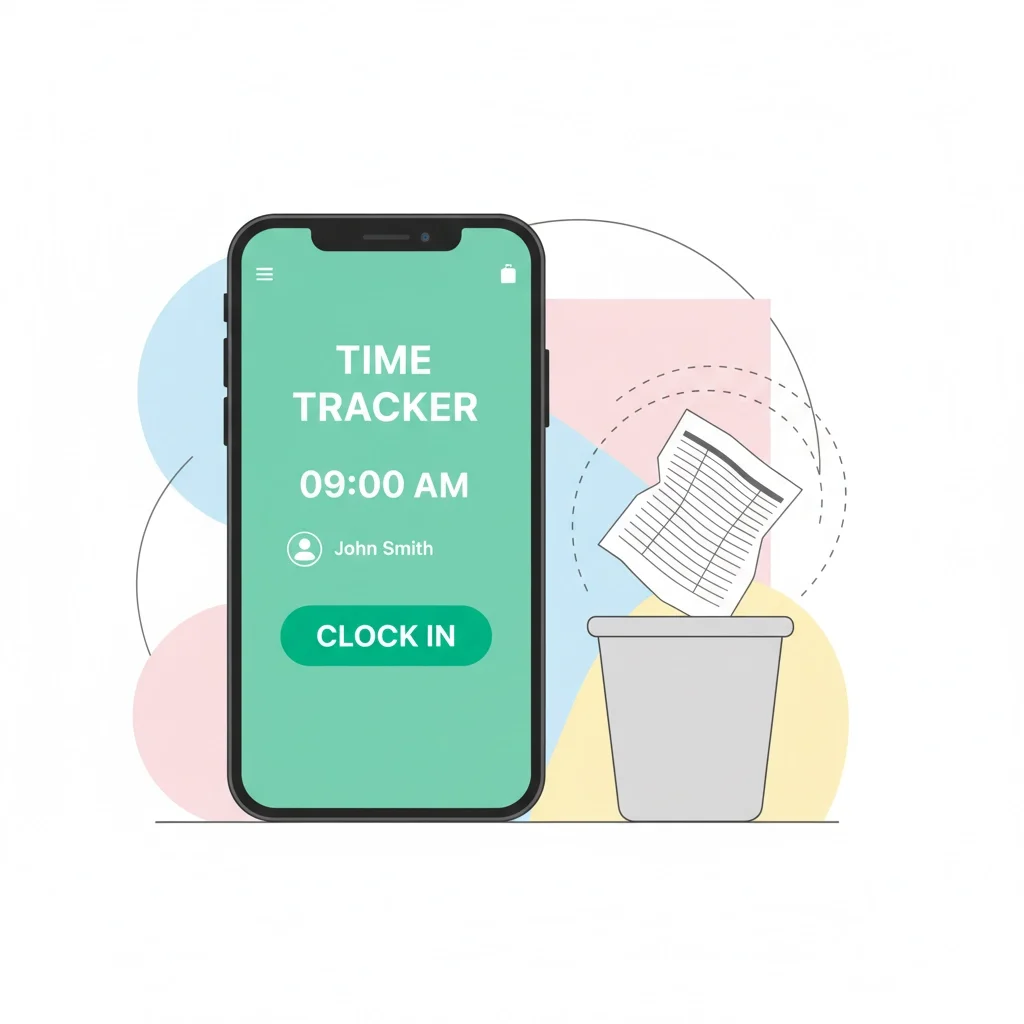Stop Losing Money on Payroll Errors: The Simple Trick to Improve Your Time Tracking Right Now
Your last payroll run probably cost you more money than you realize. Not just the wages you paid out, but the hidden costs buried in calculation errors, missed punches, and manual timesheet mistakes that are bleeding your business dry every pay period.
Companies lose up to 7% of their gross payroll due to time-tracking issues. If you're paying out $50,000 monthly in wages, that's potentially $3,500 disappearing into thin air. Every. Single. Month.
The good news? There's one simple trick that can cut these losses dramatically: switching from manual time tracking to an automated system. It's not rocket science, but it does require ditching some old habits.
The Usual Suspects: Where Payroll Errors Come From
Let's start with the obvious culprits. Manual timesheets are a breeding ground for mistakes, and not always intentional ones.
Scenario 1: The Forgetful Field Worker
Jake works on a landscaping crew and forgot to clock out yesterday. He thinks he left around 5 PM, but maybe it was 5:30? He rounds down to be "fair" and writes 5:00 PM on his paper timesheet. Plot twist: he actually left at 4:45 PM. That's 15 minutes of overpay, multiplied by however many times this happens.
Scenario 2: The Helpful Coworker
Sarah's running late, so her teammate Mike clocks her in when he arrives. "Buddy punching" like this might seem harmless, but it adds up. If Sarah's actually 20 minutes late but gets paid for the full shift, that's free money she didn't earn.
Scenario 3: The Calculation Catastrophe
Your office manager is manually calculating overtime for 15 employees across multiple job sites. Different states, different rules, different pay rates. One small mistake in a formula, and suddenly someone gets paid time-and-a-half for regular hours, or vice versa.
These aren't worst-case scenarios: they're Tuesday morning reality for businesses relying on paper timesheets and manual calculations.
The Real Cost Breakdown
Here's what those "small" errors actually cost you:
Time Theft and Buddy Punching: Studies show this can cost businesses 2-5% of gross payroll annually. For that $50,000 monthly payroll, you're looking at $1,000-$2,500 per month in losses.
Manual Entry Errors: Even the most careful payroll processor makes mistakes. Transposing numbers, missing decimal points, or miscalculating overtime can easily add 1-3% to your payroll costs.
Administrative Time: How many hours does your team spend collecting, reviewing, and correcting timesheets each pay period? If it's 10 hours at $25/hour, that's $250 in labor costs just to process payroll: costs that multiply with every correction needed.
Compliance Issues: Payroll errors can trigger labor law violations. Underpaying overtime or miscalculating break times opens you up to fines and audits that make your original errors look like pocket change.
Managing multiple employees at multiple job sites becomes exponentially more complex with manual tracking, multiplying these error rates across every location.
The Simple Trick: Automated Time Tracking
Here's the solution that can reduce payroll processing errors by up to 58%: automated time tracking systems that eliminate human guesswork.
Instead of relying on employees to remember, estimate, or honestly report their hours, automated systems capture exact clock-in and clock-out times in real-time. No more "I think I left around 5 PM" situations.
How It Actually Works:
Your employees use a mobile app or web portal to clock in from their job site. GPS tracking apps can verify they're actually at the work location, eliminating remote clock-ins from home or the coffee shop.
The system automatically calculates total hours, applies overtime rules based on your location's labor laws, and feeds directly into your payroll software. No manual data entry, no calculation errors, no missed decimals.
Real-World Example:
A landscaping company with 25 employees was losing approximately $4,000 monthly to timesheet errors and time theft. After implementing automated tracking, they cut those losses by 80% in the first month. The system paid for itself in six weeks.
Features That Prevent the Most Common Errors
GPS Geofencing: Employees can only clock in when they're within a designated radius of the job site. No more mysterious clock-ins from random locations.
Photo Verification: Some systems require a selfie when clocking in, making buddy punching nearly impossible. It sounds excessive, but it stops thousands in annual losses.
Automatic Break Deductions: Set your break policies once, and the system handles deductions automatically. No more debates about who took lunch when.
Overtime Alerts: Managers get real-time notifications when employees approach overtime thresholds, allowing for better schedule management and cost control.
Audit Trails: Every clock-in, clock-out, and edit is logged with timestamps and user information. Perfect for resolving disputes or compliance audits.
Implementation: Making the Switch Without Chaos
Week 1: Choose Your System
Look for time tracking software that integrates with your existing payroll provider. Employee tracking apps should offer GPS verification, mobile access, and straightforward reporting.
Week 2: Set Up Policies
Configure overtime rules, break policies, and geofenced locations for each job site. This upfront work prevents confusion later.
Week 3: Train Your Team
Most employees will appreciate time tracking apps once they understand the benefits: no more paper timesheets to lose, automatic calculations, and faster payroll processing.
Week 4: Run Parallel Systems
Keep your old method running alongside the new system for one pay period. This lets you catch any setup issues and gives nervous employees confidence in the transition.
Addressing Common Concerns
"My employees will think I don't trust them."
Frame this as accuracy and fairness, not surveillance. Automated tracking protects employees from being underpaid just as much as it protects you from overpaying. The pros and cons of employee tracking apps show that transparency benefits everyone.
"What about internet connectivity on job sites?"
Modern apps work offline and sync when connectivity returns. Your data won't disappear if someone loses cell service.
"This seems complicated for my older employees."
Most time tracking apps are simpler than paper timesheets. One button to clock in, one button to clock out. That's it.
The Bottom Line: ROI You Can Calculate
Let's do the math on that $50,000 monthly payroll:
Current losses from time tracking errors: $3,500/month
Cost of automated time tracking system: $200-500/month (depending on employee count)
Potential monthly savings: $2,800-3,200
Annual savings: $33,600-38,400
Even if you only eliminate half the errors, you're looking at significant savings that compound month after month.
Going paperless with time tracking isn't just about modernizing: it's about plugging a leak that's been draining your profits for years.
The simple trick isn't really a trick at all. It's using technology to eliminate human error from a process where accuracy directly impacts your bottom line. Every day you wait to make this change is another day you're literally paying for mistakes that don't have to happen.
Ready to stop losing money on preventable payroll errors? Start your free trial and see exactly how much you've been overpaying. Most businesses are surprised by the numbers( in a good way.)




